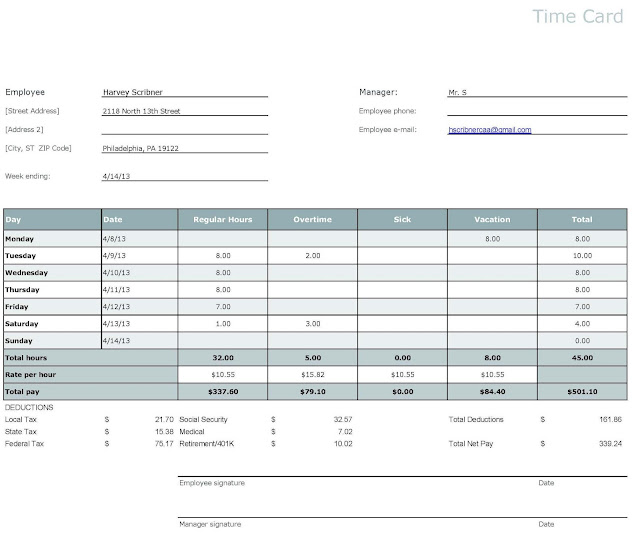Students should learn the basics about finding their first job based on the college or training they chose. Make sure that they understand that their first job may be in the field they chose, but not necessarily the position they see themselves in to start off with. That will lead to them choosing a place to live and then understanding the community they are a part of. Students will continue to work on their Personal Monthly Budget Project by creating a map of their new neighborhood and locating businesses, organizations, and stores with basic needs and other necessities that will make their new home more comfortable. Today students will create a basic food menu for the week and use time in class to shop online for the items they chose.
OBJECTIVE(S) / (SWBAT)
Participate in-class discussions about different places that might be needed in your new neighborhood.
Complete ALL Documents, Spreadsheets, and Google Forms associated with the PMB Project.
Open, Copy, Share, and Start the PMB Google Spreadsheet for PMB Project
Complete the Personal Monthly Budget Worksheet Section for STEP 6: Gorcery Day
LINKS & DOCUMENTS (Open Documents, Click FILE and MAKE A COPY)
Primary Document for Personal Monthly Budget Project (500pts)
PMB GOOGLE DOCUMENT DIGITAL WORKSHEET PACKET
Primary Spreadsheet for Personal Monthly Budget Project
PMB GOOGLE SHEET TEMPLATE (Click Here)
Simple Survey to list choices from Steps 3 and 4 yesterday:
PMB START-UP SHEET TFDL2022 SURVEY
PROJECT
To plan a weekly meal menu and shop for items on the list. To identify prices and differences in the quality of different items. To be able to accurately create a personal menu, shopping list, and translate your purchases into an online budget form for evaluation.
STEP BY STEP
1. Complete Weekly Menu Form - Get it Approved Prior to Creating Grocery List
2. Complete Grocery List Based on Menu Choices - Get it Approved Prior to Shopping
3. Shop online for items on Grocery List and compare quality and prices.
4. Total your Grocery Spending and Enter All Items on Shopping List in Budget Online (PMB)
5. Share your menu and list with the class during final presentations.
Please use the handout to plan your menu for a week. I would like you to plan at least 2 dinners for 2 people and a family dinner (6 people or more) for the weekend sometime. It can be breakfast, lunch, or dinner, but include anything you would normally serve. Once your menu is complete, make a grocery list. In addition to groceries, there is a list of other items (BELOW) that you will need to keep at your new apartment. Detergent, soap, etc. You may also include any items you might actually use regularly on your shopping list.
Additional Items to Buy: Laundry Detergent, Soap, Shampoo, Deodorant, a Mop, a Broom, All-Purpose Cleaner, Light Bulbs, Dish Soap, 3 2-Liter Bottles of Soda (ie. Coca Cola, Pepsi, etc.), Band-Aids, Cold Medicine, and a Bucket, Tylenol or Advil, Batteries and a Flashlight, a Basic Tool Set, a Wiffle Ball Bat Set, and M&M's.
Finally, go to the website below and price everything you will need. You may need to make substitutions, but you will get a good general idea of prices for your weekly shopping trip. You will enter these figures on your monthly budget (remember that this sheet and shopping list is only for one week) when you are finished as actual costs.
Here are a couple of places to shop. You may also look for other online grocery stores, pharmacies or other providers. They must list individual item pricing and you need to figure out delivery if you do not have one of the stores local to your new apartment. (Example: You can price things at Target.com, but you must figure out shipping costs if you do not have a Target store locally. You must also figure out how to get your purchases home if you do not have a car.)
https://www.freshdirect.com/index.jsp
http://www.amazon.com/
https://www.lifewire.com/groceries-online-3482646
YOU MUST ADD EVERY ITEM ON YOUR SHOPPING LIST TO THE PERSONAL SHOPPING LIST PAGE OF YOUR DATA SHEET ON THE FAMILY MONTHLY BUDGET. MAKE SURE YOU CREATE AN AREA FOR YOUR GROCERY SHOPPING FROM THE SHOPPING LIST YOU COMPLETED FOR YOUR MOVING DAY!
STEP BY STEP
1. Complete Weekly Menu Form - Get it Approved Prior to Creating Grocery List
2. Complete Grocery List Based on Menu Choices - Get it Approved Prior to Shopping
3. Shop online for items on Grocery List and compare quality and prices.
4. Total your Grocery Spending and Enter All Items on Shopping List in Budget Online (PMB)
5. Share your menu and list with the class during final presentations.
Please use the handout to plan your menu for a week. I would like you to plan at least 2 dinners for 2 people and a family dinner (6 people or more) for the weekend sometime. It can be breakfast, lunch, or dinner, but include anything you would normally serve. Once your menu is complete, make a grocery list. In addition to groceries, there is a list of other items (BELOW) that you will need to keep at your new apartment. Detergent, soap, etc. You may also include any items you might actually use regularly on your shopping list.
Additional Items to Buy: Laundry Detergent, Soap, Shampoo, Deodorant, a Mop, a Broom, All-Purpose Cleaner, Light Bulbs, Dish Soap, 3 2-Liter Bottles of Soda (ie. Coca Cola, Pepsi, etc.), Band-Aids, Cold Medicine, and a Bucket, Tylenol or Advil, Batteries and a Flashlight, a Basic Tool Set, a Wiffle Ball Bat Set, and M&M's.
Finally, go to the website below and price everything you will need. You may need to make substitutions, but you will get a good general idea of prices for your weekly shopping trip. You will enter these figures on your monthly budget (remember that this sheet and shopping list is only for one week) when you are finished as actual costs.
Here are a couple of places to shop. You may also look for other online grocery stores, pharmacies or other providers. They must list individual item pricing and you need to figure out delivery if you do not have one of the stores local to your new apartment. (Example: You can price things at Target.com, but you must figure out shipping costs if you do not have a Target store locally. You must also figure out how to get your purchases home if you do not have a car.)
https://www.freshdirect.com/index.jsp
http://www.amazon.com/
https://www.lifewire.com/groceries-online-3482646
YOU MUST ADD EVERY ITEM ON YOUR SHOPPING LIST TO THE PERSONAL SHOPPING LIST PAGE OF YOUR DATA SHEET ON THE FAMILY MONTHLY BUDGET. MAKE SURE YOU CREATE AN AREA FOR YOUR GROCERY SHOPPING FROM THE SHOPPING LIST YOU COMPLETED FOR YOUR MOVING DAY!
ESSENTIAL QUESTION(S)
What will my weekly/monthly food bill look like? How do I fit it into my budget?
What services or stores are most important, and which ones would be considered luxuries?
What items do I need to buy to survive, and what is not necessary. Based on the selection of my apartment, where can I go to buy these items, and how much will they cost.
ACADEMIC STANDARD(S) (PA)
PA Career Education & Work Standard 13.3.11.D
Analyze Budgets and Pay Statements to include paychecks, bank statements, bills, and other documents that would be required to keep a Personal Monthly Budget
Jump$tart Standards: Financial Responsibility Standards 1, 2 and 4
National Standards for Economics:
Standard 2: Decision Making
PA Social Studies:6.2.12.D: Evaluate changes in economic institutions over time (e.g., stock markets, non-government organizations)








